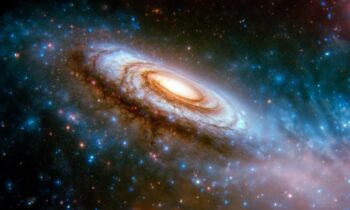Three hours after its historic lunar landing on Saturday, the Slim spacecraft was shut down to conserve power. The solar cells on it were facing west, away from the Sun, which prevented them from producing electricity, as engineers had discovered. However, the mission crew is now optimistic that when lighting conditions change, the situation may get better. “If sunlight hits the Moon from the west in the future, we believe there’s a possibility of power generation, and we’re currently preparing for restoration,” the statement said.
- Japanese landing on the moon is threatened by a malfunction.
- Over the Pacific Ocean, an American lunar mission was destroyed.
Japan is now only the fifth country in history to have successfully completed a soft lunar landing thanks to the Slim mission, also known as “Moon Sniper” due to its use of precision landing technologies.
However, when power levels depleted, the excitement of witnessing the spaceship finish its controlled drop quickly gave way to concern.
It was decided to put the ship to sleep rather than let the battery system to run entirely flat.
“The battery was disconnected according to our procedures with 12% power remaining, in order to avoid a situation where the restart (of the lander) would be hampered,” Jaxa stated.
“As a result, the spacecraft was switched off at 02:57 (Saturday, Japan time, or 17:57 GMT, Friday).”
Mission control was able to successfully obtain information about Slim’s situation and data regarding its descent to the lunar surface prior to shutdown.
“We’re relieved and beginning to get excited after confirming a lot of data has been obtained,” Jaxa stated.
Updates were promised by the agency throughout the entire week.
Early in the “lunar day,” when the Sun rises above the eastern horizon, is when moon missions attempt to land. This allows a spaceship to be illuminated for roughly two “Earth weeks” before the Sun sets in the west, resulting in two weeks of darkness.
At Slim’s landing spot on the slopes of Shioli Crater, it is “morning” at the moment. The spacecraft might have to wait until the “lunar afternoon” before its solar cells receive enough light to begin charging its battery system if, as is expected, they are facing westward.
Data suggests that Slim was carrying two tiny rovers, which it was able to expel as intended immediately before touchdown.
An infrared camera is also installed on the vessel to explore the local geology. It’s unclear how much it could look into once power levels are restored.
Statistics show that landing on the moon is extremely difficult. Of all the attempts, just around half have been successful.
Only the US, the former Soviet Union, China, and India had reached the surface undamaged before Slim’s touchdown.
Earlier this month, a private American expedition abandoned its attempt to land after encountering a propulsion issue soon after taking off from Earth. In late February, a second commercial US mission will give it a go.



